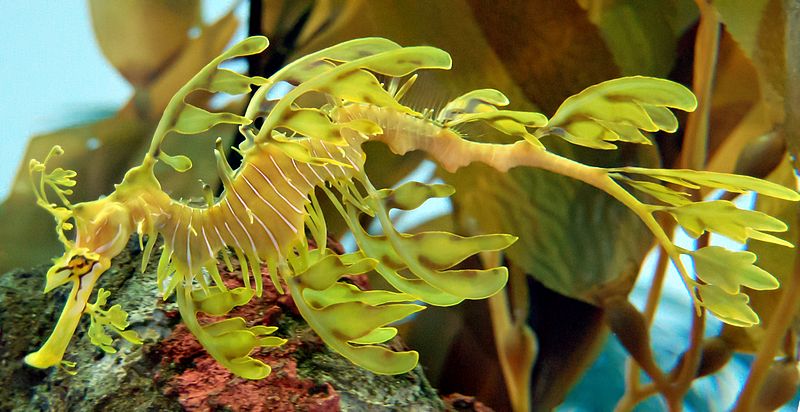The leafy sea dragon (Phycodurus eques) is a species of marine fish from the same family of sea horses. They are good at camouflaging. The are rated as ''Near Threatened'' by the IUCN. It is also known as the Glauerts sea dragon.
Physical Features
The leafy sea dragon is not large, but it is larger compared to other sea horses, growing about 20 to 25 cm. They get their name from the mythological creature, the dragon. The leafy sea dragon has leaf like protrusions all over the body. These protrusions are used to camouflage.
 |
| Leafy sea dragon camouflaging |
Diet
Threats
Leafy sea dragons have many threats. These threats are humans or natural predators and even different natural calamities. As leafy sea dragons are very slow swimmers, it is difficult for them to escape from predators. They sometimes caught by fishermen. Unlike sea horses, sea dragons cannot curl their tail around grasses and therefore are washed to sore by storms. They are even affected by increasing pollution in water.
Distribution and Habitat
The leafy sea dragon is found only in the waters of Kangaroo Islands, Australia on the Southern shoreline of the Jurien Bay. They were once thought to have a very limited range but scientists have found out that they may travel several hundred meters from their original habitat and then will return to the same spot. Leafy sea dragons are commonly spotted by scuba divers in Adelaide. They are found around clumps of sand, hiding behind rocks and sea weeds at a depth of 50 meters.

No comments:
Post a Comment